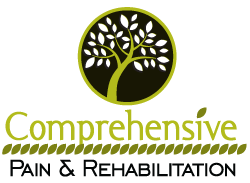Stimulating Implant Provides Relief From Chronic Back Pain
By Casandra Andrews, Press-Register
DAPHNE, AL (July 26, 2011)
In 2005, Adam Newell fell 10 feet from scaffolding, shattering his left ankle, fracturing a leg bone and damaging his back as he smacked down hard on red clay. The carpenter spent weeks in the hospital recovering from his extensive injuries.
In the months that followed, Newell thought the stabbing pain that left him disabled might never subside. Finding little relief from pills, he heard about a pain management clinic in Baldwin County that might be able to help.
What eventually delivered Newell from agony, he said, was a device about the size of a cell phone he was able to try out before having it implanted under the skin near his hip.
Known as a spinal cord stimulator, the machine is like a pacemaker for the spinal column, said Dr. Hunt Hapworth, a physician with Comprehensive Pain & Rehabilitation in Daphne, who treated Newell.
“In essence, it puts an electrical road block between the source of the pain and where the pain is sensed and experienced in the brain,” Hapworth said. “In place of their painful sensation, the patient feels a comfortable massaging feeling.”
While older versions of the device have been around for years, the newer models don’t require major surgery to implant, Hapworth said.
“Chronic pain really robs people of dignity,” Hapworth said. “We see a lot of people who have gone through surgery and are still hurting.”
About 116 million Americans suffer from chronic pain, according to a recent study by the Institute of Medicine. And all that suffering comes with a hefty price tag. The same report found that in 2010, the total annual cost of health care due to pain was as much as $635 billion in the United States. That figure combines the medical costs of pain care and the economic costs related to disability days and lost wages and productivity, according to the IM report.
Spinal cord stimulators are often used in the treatment of failed back surgery syndrome as well as complex regional pain syndrome. The device implanted in Newell’s lower back was made by Boston Scientific. He was able to try out the technology with an outpatient procedure before deciding to have it implanted permanently.
A master carpenter by trade, Newell said it took a while before he made the decision. “At first I was scared of it because of the proce- dure. I’m old fashioned. I’d have wires sticking out of my back. It sounded bad.”
After talking with a psychiatrist, watching an informational DVD and weighing his options, Newell took the plunge. He went in for the test run and said he couldn’t believe how quickly it eased his pain: “It literally feels like someone is on the inside massaging the very points where I need the most relief.”
Unable to work, Newell said pain ruled his life and plunged him into a deep depression for a time. “I’m disabled, but thanks be to them, it’s tolerable. All I have to do is go lie down and turn the stimulator on. It’s like a warm breath of sunshine on a cold day.”
Typically, a spinal cord stimulator sends pulsed electrical signals to the spinal cord to control chronic pain. The device consists of stimulating electrodes that are implanted in the epidural space in the back, an electrical pulse generator — often implanted in the lower abdomen — conducting wires connecting the electrodes to the generator and a generator remote control.
Hapworth is one of several physicians at Comprehensive Pain & Rehabilitation, a Christ-centered ministry founded to provide relief to those who suffer from chronic pain. Patients are typically referred by other doctors to the practice that has offices in Daphne and Pascagoula.
“We have the opportunity to see a patient on a long-term basis,” Hapworth said. “When you are dealing with people in pain, you can make a really big impact. You can give them their lives back.”
Read this article online: http://blog.al.com/live/2011/07/managing_pain_stimulating_devi.html
